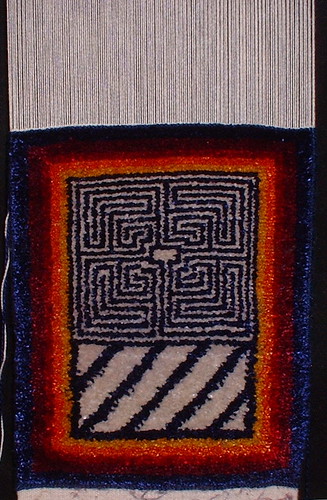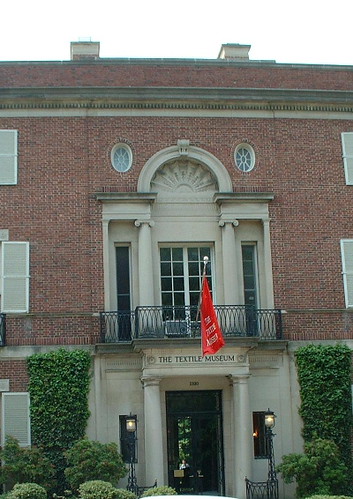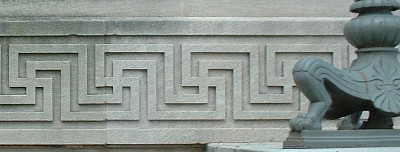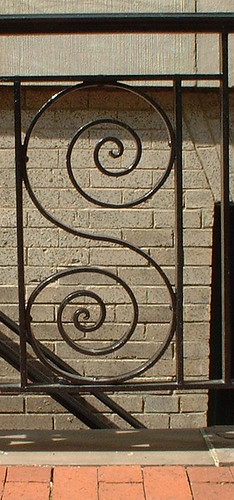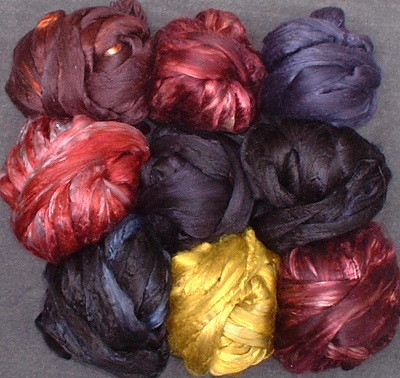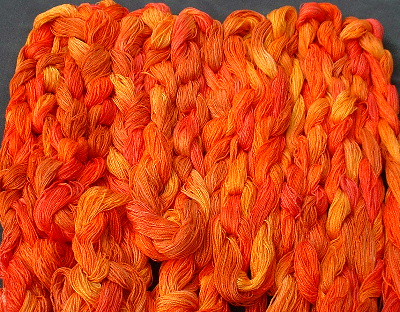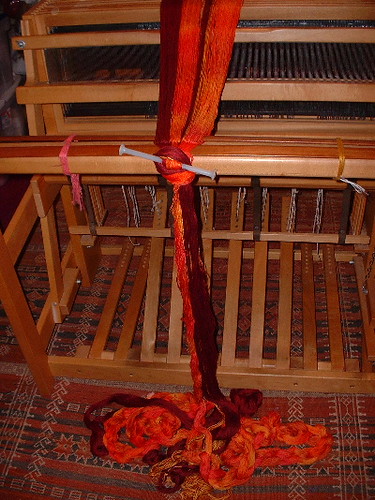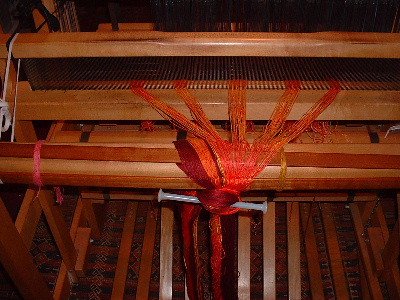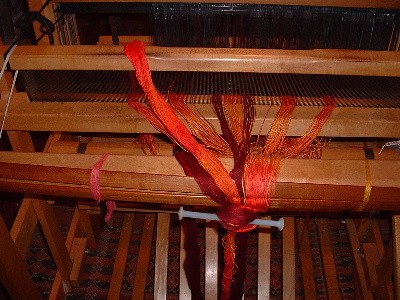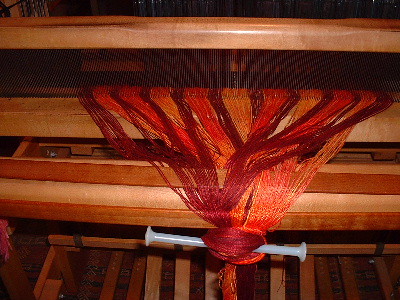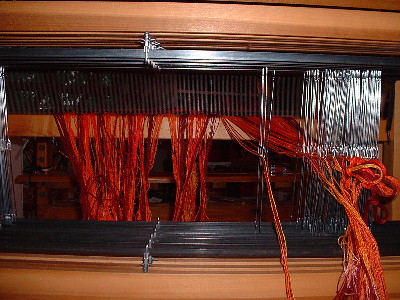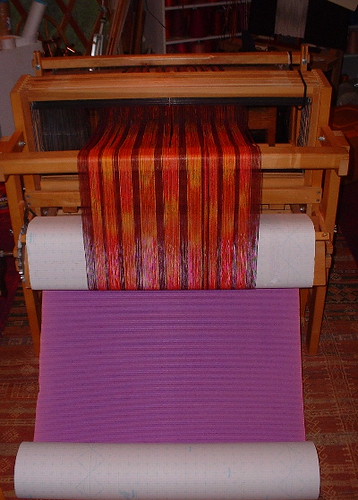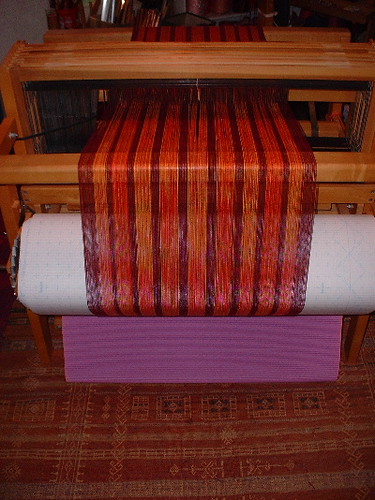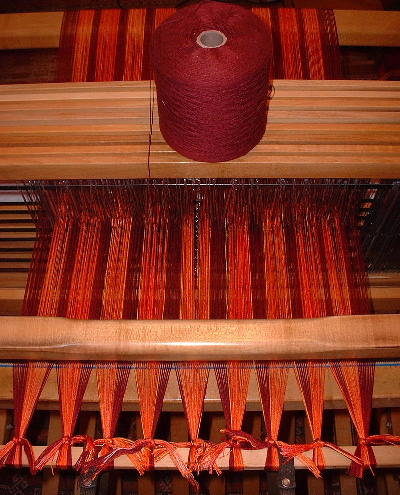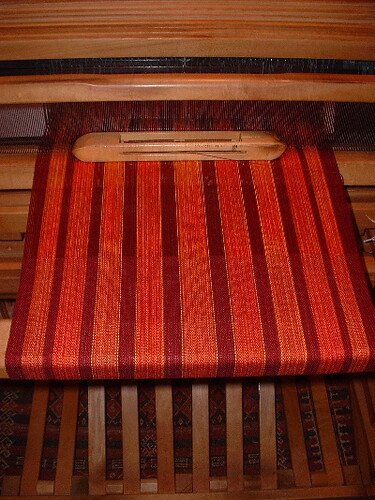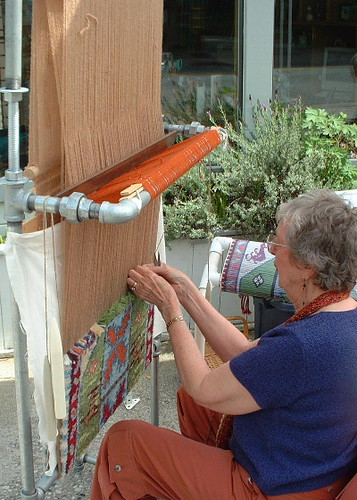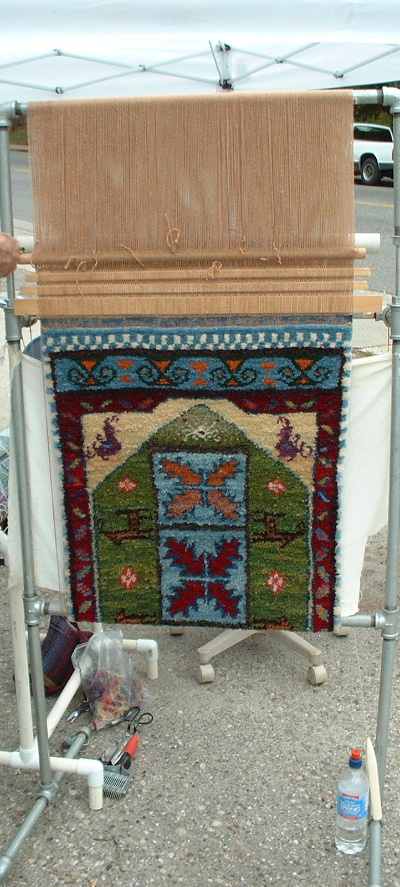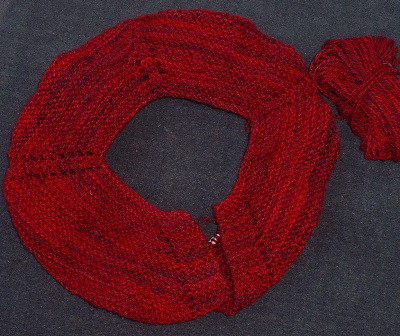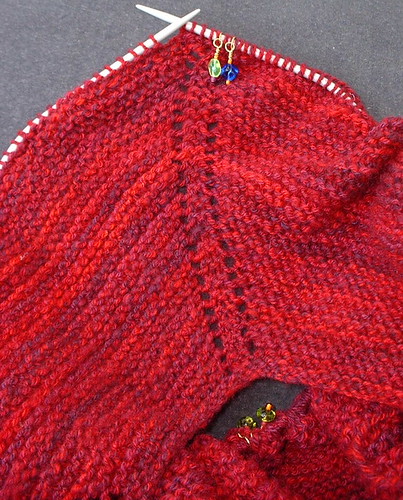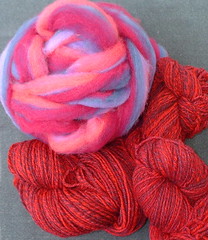The Project Pipeline
I know that those of you reading this have a stack of projects in various stages of unfinishedness (new words are invented everyday). So how do you choose? Sometimes, mine choose me. In fact they are insistent.
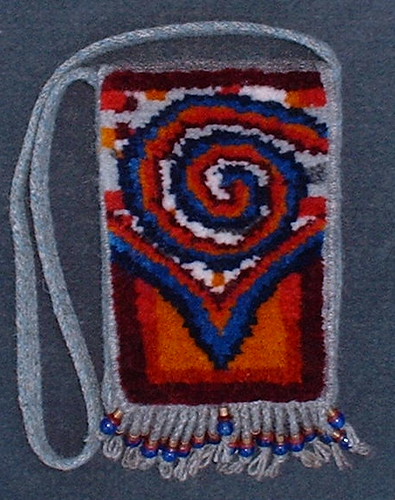
I worked on this bag for the last two days, finishing it up. It is not needed for a nearby deadline (as others are), but I did need to clear it off the loom it was on, because the loom is needed. Well, that's nutty, because the loom was a homemade copper pipe loom, and I could just as easily, and more quickly, have made another loom. But that would be even nuttier, as I would then have four copper pipe looms in the studio with projects in various stages of unfinishedness. Hence the promise to myself: finish this bag before starting the next one.
I started this bag as a class sample last summer, so it was designed on the fly, and then the design was polished up a bit when I got home and got down to weaving it. And Marie, the orange wool you gave me last Fall is in this bag: look along the rust/orange border at the bottom of the flap, and you'll see where the color changes slightly: that's where I started with your wool!
Some of you may recall the back of the bag:
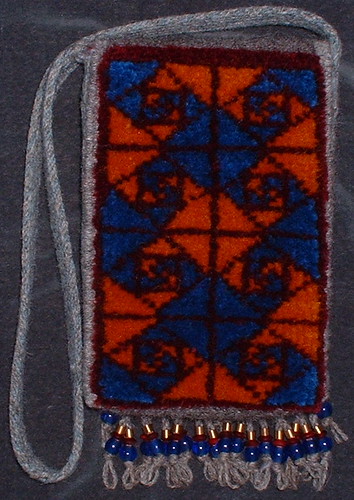
The quilt block design in knotted pile. This photo also more clearly shows the beads I shoved onto the fringe. I occasionally feel like I'm exposing my old Hippie ways when I bead every available surface, but I know I'm in good, worldwide company, especially when I see the bags on display at the Textile Museum in DC or read this book.
What remained was the front of the bag, which I usually do in (very slow) soumak, and the handle (cardweaving, but simple cardweaving, not Gudrun Polack cardweaving), and the sewing up and embellishment.
So this week I did the soumak:
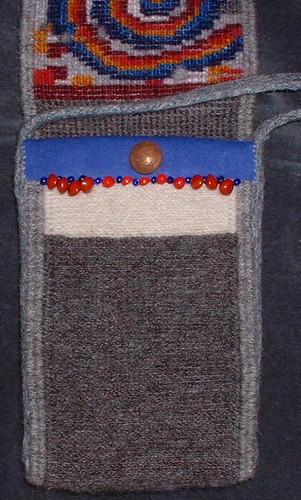
conveniently running out of grey handspun before the front was finished. When I run out of yarn on projects like this, I try to improvise. I call it "thinking like a village weaver". If I lived in a remote village in the regions where this type of weaving is done as a matter of course, I would be weaving for practicality's sake, as well as for technical excellence and beauty. So if I ran out of yarn, I'd finish the bag in what was on hand. So I did, using the white yarn at the top.
This made for a nice stage for some more bead embellishment, in this case seeds, glass beads, and shells (painted red, from a thrift store shell necklace, woohoo!). Until I took this photo, and looked at it from the distance perspective photos can give, I did not realize they looked like little red teeth. Cool, that should be a good protective omen for a bag, don't you think?
Now, I must take control of the project pipeline and finish the Labyrinth Bag, which *is* needed for a deadline. I will be pressed for time, under the gun, and I did it to myself. I'd like to abdicate responsibility, and insist that this project pressed itself forward, but more likely it was my long standing habit of procrastination rearing it's ugly head.

I worked on this bag for the last two days, finishing it up. It is not needed for a nearby deadline (as others are), but I did need to clear it off the loom it was on, because the loom is needed. Well, that's nutty, because the loom was a homemade copper pipe loom, and I could just as easily, and more quickly, have made another loom. But that would be even nuttier, as I would then have four copper pipe looms in the studio with projects in various stages of unfinishedness. Hence the promise to myself: finish this bag before starting the next one.
I started this bag as a class sample last summer, so it was designed on the fly, and then the design was polished up a bit when I got home and got down to weaving it. And Marie, the orange wool you gave me last Fall is in this bag: look along the rust/orange border at the bottom of the flap, and you'll see where the color changes slightly: that's where I started with your wool!
Some of you may recall the back of the bag:

The quilt block design in knotted pile. This photo also more clearly shows the beads I shoved onto the fringe. I occasionally feel like I'm exposing my old Hippie ways when I bead every available surface, but I know I'm in good, worldwide company, especially when I see the bags on display at the Textile Museum in DC or read this book.
What remained was the front of the bag, which I usually do in (very slow) soumak, and the handle (cardweaving, but simple cardweaving, not Gudrun Polack cardweaving), and the sewing up and embellishment.
So this week I did the soumak:

conveniently running out of grey handspun before the front was finished. When I run out of yarn on projects like this, I try to improvise. I call it "thinking like a village weaver". If I lived in a remote village in the regions where this type of weaving is done as a matter of course, I would be weaving for practicality's sake, as well as for technical excellence and beauty. So if I ran out of yarn, I'd finish the bag in what was on hand. So I did, using the white yarn at the top.
This made for a nice stage for some more bead embellishment, in this case seeds, glass beads, and shells (painted red, from a thrift store shell necklace, woohoo!). Until I took this photo, and looked at it from the distance perspective photos can give, I did not realize they looked like little red teeth. Cool, that should be a good protective omen for a bag, don't you think?
Now, I must take control of the project pipeline and finish the Labyrinth Bag, which *is* needed for a deadline. I will be pressed for time, under the gun, and I did it to myself. I'd like to abdicate responsibility, and insist that this project pressed itself forward, but more likely it was my long standing habit of procrastination rearing it's ugly head.
